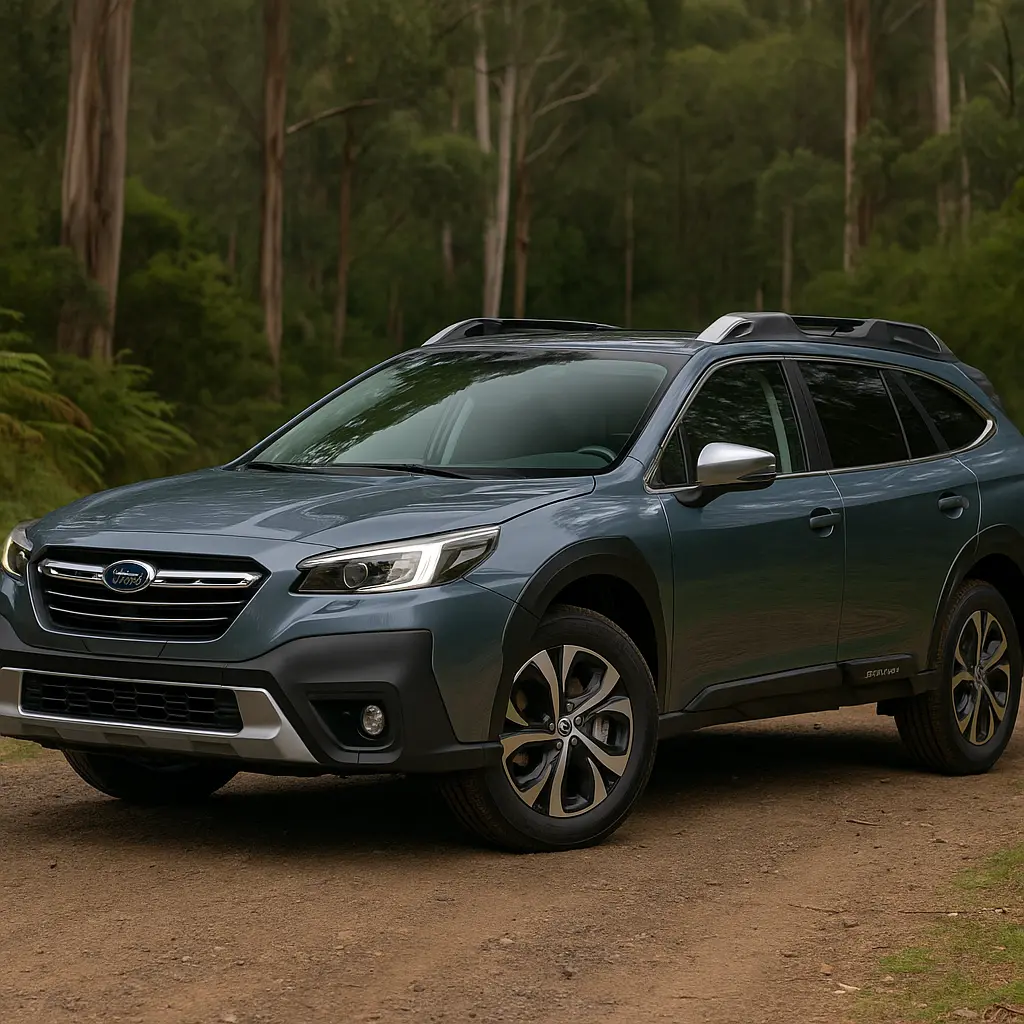Most Common 2025 Car Faults Reported by Aussie Drivers
Introduction: A Rising Concern in Modern Mobility
Despite rapid advancements in car tech and safety, 2025 has brought a surge in reported vehicle faults across Australia. While many of today’s cars are smarter than ever, the added complexity has given rise to new, often frustrating problems for owners—from EV battery hiccups to unpredictable infotainment bugs.
This blog dives into the most reported car issues by Aussie drivers this year, shedding light on which faults are most common, which brands are being flagged, and what proactive steps you can take to stay ahead of costly breakdowns.

1. Battery and Electrical System Failures
Still the Most Reported Fault in 2025
Despite improvements in battery design and power management systems, electrical issues remain the top reported problem for both combustion and electric vehicles.
Typical Complaints:
Flat 12V batteries in newer hybrids and EVs
Faulty alternators
Electrical system warning lights
Malfunctioning start-stop systems
Battery management system (BMS) software glitches
Notable Brands Affected:
Toyota hybrids: Known for 12V auxiliary battery drain
Hyundai Ioniq 5 & EV6: Some early reports of system resets
Ford Ranger: Battery issues linked to accessory overload
Prevention Tips:
Regular battery health checks
Avoid overloading with aftermarket accessories
Always check for BMS software updates
2. Infotainment System Glitches and Connectivity Issues
Smart Cars, Dumb Systems?
The surge in touchscreen and voice-control infotainment systems has created an entirely new category of complaints.
Common Issues:
Frozen screens
Bluetooth disconnects
Wireless Apple CarPlay lag
Reboots while driving
Navigation systems crashing
Most Affected Models:
MG4 EV: Early software patch required for infotainment lag
Volkswagen ID.4: Connectivity and GPS lag
Mazda CX-5: Touchscreen freeze under hot cabin conditions
What Drivers Say:
"It's like my car needs a reboot more often than my laptop!" – Sydney MG4 owner
Fixes:
Dealer software updates
Factory reset of system
Keeping firmware current
3. Transmission and Gearbox Problems
CVTs and DCTs Still Causing Headaches
With many manufacturers embracing Continuously Variable Transmissions (CVTs) and Dual-Clutch Transmissions (DCTs), driver complaints have escalated.
Reported Problems:
Gear hesitation
Rough or jerky shifting
Noisy transitions
Transmission overheating
Culprits:
Nissan X-Trail: CVT issues persist into 2025
Hyundai Tucson DCT: Urban driving jerkiness
Honda HR-V: Reports of sluggish acceleration
Solutions:
Scheduled transmission fluid changes
Avoid aggressive stop-start driving
Dealer diagnostics for firmware recalibration
4. Brake System Faults
From Screeching Pads to Electronic Parking Failures
While not as widespread as others, braking system problems are becoming more common—especially with electronic systems and brake-by-wire tech.
Top Brake Issues:
Squealing even with new pads
Brake pedal fade under load
Malfunctioning auto-hold and e-brake
Uneven wear or warped discs
Reported on:
Tesla Model Y: Auto-hold sensitivity issues
Ford Everest: Rear drum squeal complaints
Subaru Forester: Electronic parking brake not releasing
Owner Advice:
Get brakes inspected every 10,000 km
Use OEM pads for replacements
Pay attention to dashboard brake warnings
5. Paint, Trim and Build Quality Issues
More Plastic, More Problems
With cost-saving measures and quicker production cycles, many vehicles show early signs of cosmetic degradation.
Typical Complaints:
Fading paint, especially reds and blues
Peeling clear coat on plastic bumpers
Window trim rattles
Loose panels or alignment gaps
Brands Facing Scrutiny:
BYD Atto 3: Interior rattles and dash creaks
Chery Omoda 5: Reports of flimsy trim
Mitsubishi Outlander: Boot lining detachment
Long-Term Impact:
Affects resale value
Can reduce cabin comfort
Makes a car feel older than it is
6. Air Conditioning and HVAC Faults
Hot Aussie Climate Meets Flaky Climate Control
A functional A/C system is a must in Australia, yet many new models are showing HVAC weaknesses.
Frequent Issues:
Weak airflow
Delayed cooling
Cabin sensors misreading temps
Foul smells from vents
Models with Recurring Complaints:
Kia Seltos: Weak fan output in high heat
Nissan Navara: Compressor faults
Skoda Kamiq: Fluctuating cabin temps
Tips to Mitigate:
Replace cabin filter annually
Don’t blast max A/C right after engine start
Run A/C weekly even in winter to maintain system health
7. ADAS (Advanced Driver Assistance System) Failures
When “Smart” Safety Turns Dumb
Radar-based tech is now standard, but calibration errors and false alerts are frequent frustrations.
Reported Problems:
Lane departure systems activating incorrectly
Collision warnings triggering too early
Adaptive cruise control errors
Parking sensors giving false positives
Vehicle Types Affected:
Electric vehicles with over-the-air updates
SUVs with blind-spot monitoring and 360° cameras
Hybrids with regen braking linked to ADAS
Tech Tangle:
Aussie drivers often report that ADAS faults are intermittent and tough to replicate at the dealership.
8. Tyre Pressure Monitoring System (TPMS) Errors
Smart Tyres Causing Dumb Alerts
TPMS sensors have become standard, but they’re not immune to quirks.
Common Gripes:
Low pressure warnings when pressure is fine
Fails to reset after tyre rotation
Winter-to-summer temp swings triggering alerts
Key Tip:
Always use a calibrated manual gauge to confirm pressure before panicking.
9. EV-Specific Faults – Australia’s Emerging Pain Points
Learning Curve for First-Time EV Owners
With the rise of affordable Chinese EVs and new entrants like the BYD Seal and GWM Ora, many Australians are experiencing unique EV challenges.
Typical Complaints:
Charging port failures
Slow DC fast charging speeds
Range discrepancy from advertised figures
Glitches in regen brake tuning
Models with Recurring Mentions:
BYD Dolphin: Underwhelming highway range
MG ZS EV: Charging flap sticking
Tesla Model 3 Highland: Sudden power limiter activation
10. Fuel System and Sensor Issues
Petrol & Diesel Cars Still Not Immune
Despite cleaner fuel standards and efficient engines, faults still arise.
Notable Problems:
Failing oxygen sensors
EGR (Exhaust Gas Recirculation) clogs
Fuel injector leaks
Turbo lag or wastegate rattle
Brands Mentioned in Reports:
Isuzu D-MAX: Diesel particulate filter (DPF) regen issues
Mazda CX-30: O2 sensor triggering CEL (check engine light)
How These Faults Impact Resale Value
Frequent faults—especially when not fixed quickly—can significantly harm your resale value. Vehicles with documented repairs, recurring faults or software issues often attract lower trade-in prices and fewer private buyers.
Tips to Preserve Value:
Keep detailed service records
Act on warning signs early
Don’t ignore infotainment updates
Choose brands with strong support networks
The Rise of Software-Based Solutions
One noticeable 2025 trend is how many car issues are now fixed via software. Over-the-air updates (OTA) have become crucial, especially in EVs and high-tech ICE models.
However, not all brands are as quick or transparent in rolling out bug fixes. Tesla and BYD lead in OTA agility, while traditional brands like Honda or Mitsubishi still rely on dealer-based updates.
Conclusion: What Aussie Drivers Should Watch For
The most common 2025 car issues in Australia reflect a growing gap between mechanical reliability and software complexity. As vehicles get smarter, they also become more prone to tech failures—putting drivers in the awkward position of diagnosing issues with an app, not a wrench.
To stay ahead:
Maintain regular servicing
Stay alert to software recalls
Educate yourself on brand-specific quirks
Always report recurring issues under warranty
Being informed helps you make smarter car choices, avoid costly surprises, and improve long-term ownership satisfaction.
Leave a comment
Your email address will not be published. Required fields are marked *




